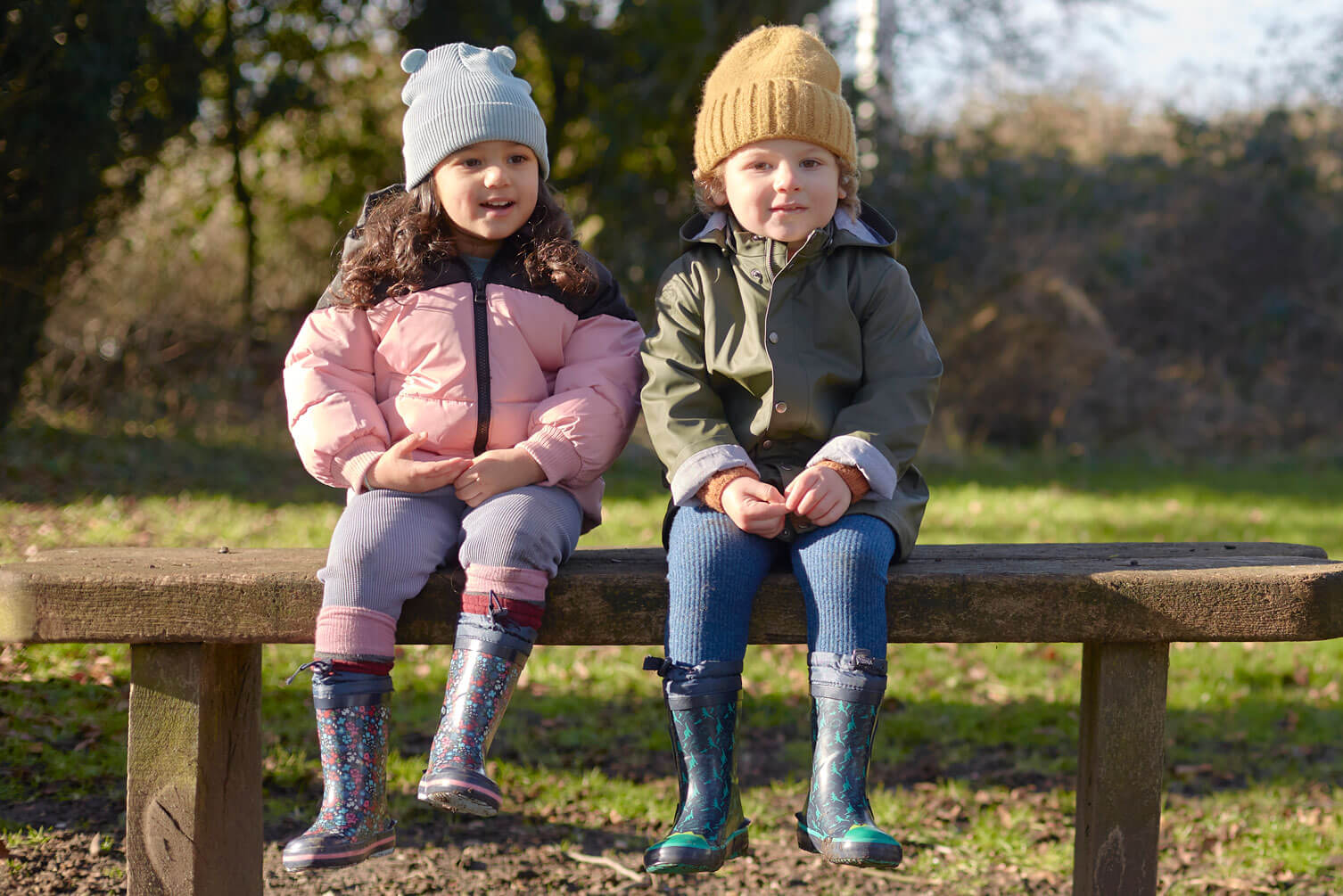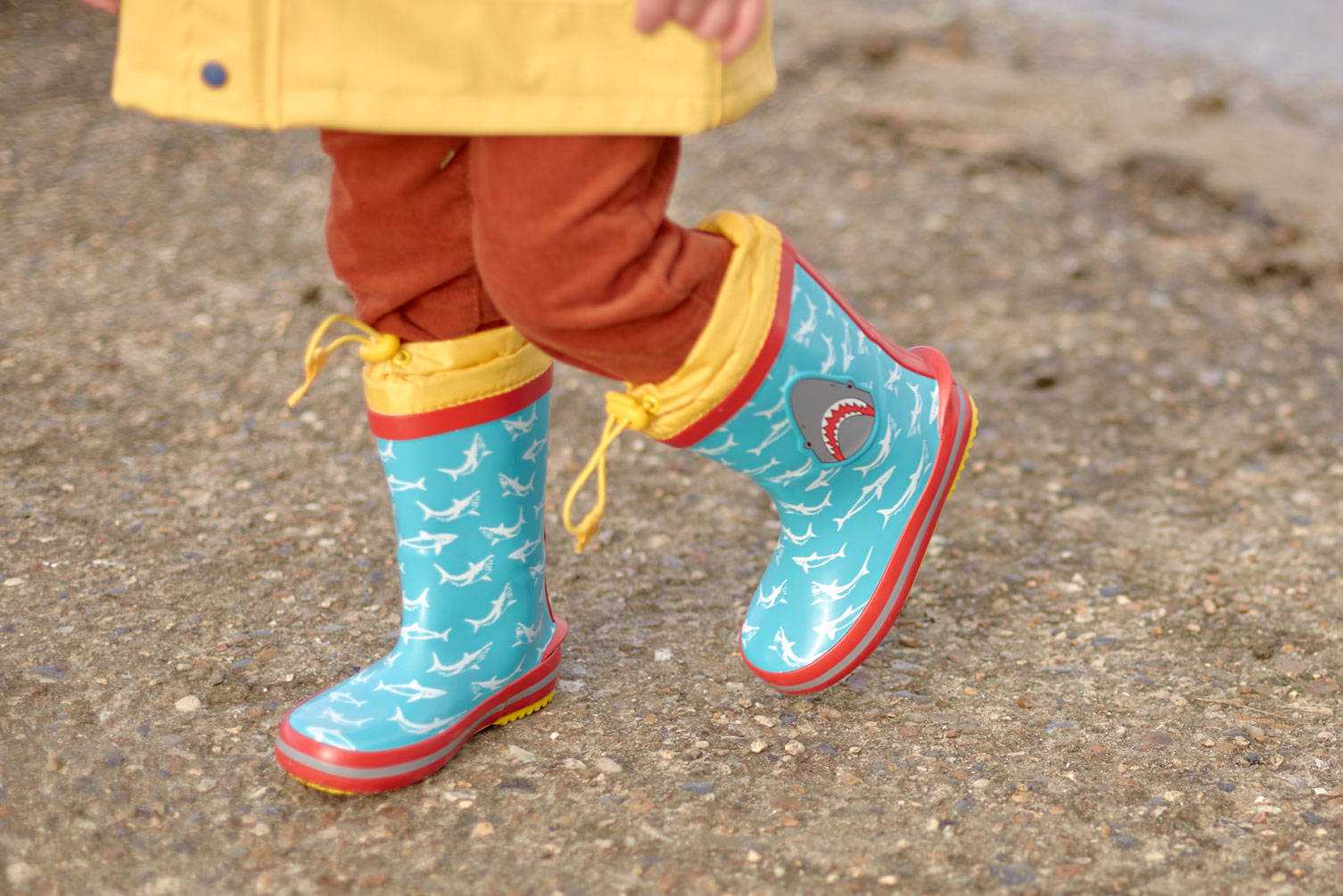
Wellies are a necessary part of growing up and long before Peppa Pig, children have delighted in jumping in muddy puddles. While wellies seem like a fairly standard purchase, we receive a great deal of questions from concerned parents on getting the correct fit. Below, we’ve answered a number of questions relating to choosing the right wellies for your child, including tips and tricks on how to find the best fit. Keep reading to learn more.
When your child is wearing their wellies, it’s likely they’ll be splashing about in muddy puddles and suchlike, making it very important to get the right fit. You’ll want to pick a pair that fits well around the lower calf and the foot itself - not so tight as to be painful or uncomfortable, but not so loose that the wellies are likely to come off during exuberant play.
As well as helping to keep your little one and their wellies attached to one another, getting the right size helps to ensure they’re getting the right support for their feet while running around. If you’ve ever worn shoes that are too large yourself, you’ll probably have felt like you had to be extra careful with every step to avoid tripping over and injuring yourself. The same is true for children - especially when they’re excited about playing outside.
So many parents ask this question, wondering if they should size up to make allowances for thicker socks. There is no need to size up and you should always try on a pair of wellies that are true to your child’s size at the time, while wearing thicker socks that will be used in the winter months. If you are buying online and want to be sure about Start-Rite sizing then use our guide on how to measure your children’s feet. All Start-Rite shoes and wellies have growing room built in, so with our wellies you should not have to size up.

Wellies that are made from natural rubber can stretch to some extent, which may be helpful in giving your child that little bit of extra wiggle room. However, they’ll only stretch a small amount - not enough to reach the next size, for instance - so if your little one’s feet are starting to feel cramped in their old wellies, it’s time to get a new pair.
We would strongly advise against trying to manually stretch your little one’s wellies in any circumstances, because they’re not made to do that. Therefore, stretching them could damage the integrity of the material, leading to it not protecting your little one’s feet as it should. This could lead to pain or, in extreme cases, effects on your child’s foot development.
In order to choose the right size of wellies for your child, there are a few things you need to know.
1. Don't buy too far in advance.
Like with school shoes, it’s best not to buy your child’s new wellies too far in advance of them actually needing them. That’s because children’s feet tend to grow quickly - so what fits in the middle of summer won’t necessarily fit well the following winter. As a general rule, try to stick to within a month of needing wellies - for example, buying in late September or early October so your little one has a pair to wear out for Bonfire night.
2. Measure your child's feet properly
The whole point behind the first tip is to make sure you don’t buy wellies that won’t fit your child, and this suggestion works the same way. When it’s time to buy new wellies, make sure to measure your little one’s feet so you have an up-to-date understanding of what size you’re looking for.
3. Always have your child try new wellies on before wearing them on an adventure
We’re sure you’ve done everything you can to get the very best fit for your little one. However, it’s still worth trying on their brand new wellies before it’s time to take them out into the puddles. That way, you have a little time to buy a different size if something’s gone wrong.
Remember, your little one should be wearing thick socks with wellies, as they don’t have a built-in cushioning insole. Plus, it helps to keep their feet warm. So, make sure they’re also wearing thick socks when you try on the new wellies so you can be sure you’re getting an accurate feel for how well they fit.
4. Choose wellies that are the right height
You might think that shoe size is the only factor to consider when choosing the size of new wellies, but that’s not the case. Don’t forget height! While ankle-height wellies can be very trendy and cute on your little one, they’re not always the best choice. If your child goes puddle-jumping in ankle-height wellies, they will almost certainly get soggy feet. Choose wellies that go up to their mid-calf for better coverage, as this will help to reduce the risk of water getting in over the top.
5. Consider additional features that may impact fit
Last but not least, there are a few bells and whistles when it comes to wellies that may have an impact on how they fit. For example, you might find that in order to get the best foot fit, you have to compromise on calf fit, leaving the wellies gaping at the top. But if you choose wellies that have elasticated tops and waterproof uppers, these can help to seal the top of the boot around your little one’s calves, helping to keep their feet warm and dry.
With this guide, you should be well on your way to choosing the best wellies for your little one. Browse our range of child-friendly wellies today.

Author: Click Consult, published 15-07-2022.